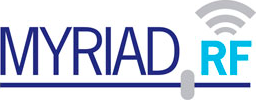Okay, so another potential quick test issue.
I bought a second LimeSDR (not mini) after my first board’s micro-b connector was damaged. When I received my new board a couple of months ago and I was careful to quickly check it for functionality and put it away until I had a suitable enclosure.
I just received my active cooling enclosure from crowd supply (Hacker Gadgets) a few days ago. Assembly for the enclosure required attaching the 12 u.fl cables and applying thermal paste to several components, but I was very careful. Everything seemed fine, until today when I ran the quick test.
When I first plug the Lime in, it passes with the following…
`->Start time: Sat May 2 21:37:44 2020
->Device: LimeSDR-USB, media=USB 3.0, module=FX3, addr=1d50:6108, serial=0009081C05C40F11
Serial Number: 0009081C05C40F11
[ Clock Network Test ]
->FX3 GPIF clock test
Test results: 60547; 64303; 2523 - PASSED
->Si5351C test
CLK0: 17555 / 17554 - PASSED
CLK1: 17555 / 17554 - PASSED
CLK2: 17555 / 17554 - PASSED
CLK3: 17555 / 17554 - PASSED
CLK4: 17555 / 17554 - PASSED
CLK5: 17555 / 17554 - PASSED
CLK6: 17555 / 17554 - PASSED
->ADF4002 Test
Result: 10 - PASSED
->VCTCXO test
Results : 5112938 (min); 5113082 (max) - PASSED
->Clock Network Test PASSED
[ FPGA EEPROM Test ]
->Read EEPROM
->Read data: 13 01 1D 13 01 1D 02
->FPGA EEPROM Test PASSED
[ LMS7002M Test ]
->Perform Registers Test
->External Reset line test
Reg 0x20: Write value 0xFFFD, Read value 0xFFFD
Reg 0x20: value after reset 0x0FFFF
->LMS7002M Test PASSED
[ RF Loopback Test ]
Note: The test should be run without anything connected to RF ports
->Configure LMS
->Run Tests (TX_2-> LNA_L):
CH0 (SXR=800.0MHz, SXT=805.0MHz): Result:(-14.2 dBFS, 5.00 MHz) - PASSED
CH1 (SXR=800.0MHz, SXT=805.0MHz): Result:(-16.0 dBFS, 5.00 MHz) - PASSED
->Run Tests (TX_1 -> LNA_W):
CH0 (SXR=1800.0MHz, SXT=1805.0MHz): Result:(-18.9 dBFS, 5.00 MHz) - PASSED
CH1 (SXR=1800.0MHz, SXT=1805.0MHz): Result:(-21.0 dBFS, 5.00 MHz) - PASSED
->Run Tests (TX_2-> LNA_H):
CH0 (SXR=2500.0MHz, SXT=2505.0MHz): Result:(-15.7 dBFS, 5.00 MHz) - PASSED
CH1 (SXR=2500.0MHz, SXT=2505.0MHz): Result:(-13.8 dBFS, 5.00 MHz) - PASSED
->RF Loopback Test PASSED
=> Board tests PASSED <=
Elapsed time: 2.03 seconds
However, as the temp increases the failure begins.
`[ TESTING STARTED ]
->Start time: Sat May 2 21:55:25 2020
->Device: LimeSDR-USB, media=USB 3.0, module=FX3, addr=1d50:6108, serial=0009081C05C40F11
Serial Number: 0009081C05C40F11
[ Clock Network Test ]
->FX3 GPIF clock test
Test results: 59662; 63418; 1638 - PASSED
->Si5351C test
CLK0: 17554 / 17554 - PASSED
CLK1: 17554 / 17554 - PASSED
CLK2: 17554 / 17554 - PASSED
CLK3: 17554 / 17554 - PASSED
CLK4: 17554 / 17554 - PASSED
CLK5: 17554 / 17554 - PASSED
CLK6: 17554 / 17554 - PASSED
->ADF4002 Test
Result: 10 - PASSED
->VCTCXO test
Results : 5112948 (min); 5113089 (max) - PASSED
->Clock Network Test PASSED
[ FPGA EEPROM Test ]
->Read EEPROM
->Read data: 13 01 1D 13 01 1D 02
->FPGA EEPROM Test PASSED
[ LMS7002M Test ]
->Perform Registers Test
->External Reset line test
Reg 0x20: Write value 0xFFFD, Read value 0xFFFD
Reg 0x20: value after reset 0x0FFFF
->LMS7002M Test PASSED
[ RF Loopback Test ]
Note: The test should be run without anything connected to RF ports
->Configure LMS
->Run Tests (TX_2-> LNA_L):
CH0 (SXR=800.0MHz, SXT=805.0MHz): Result:(-14.8 dBFS, 5.00 MHz) - PASSED
CH1 (SXR=800.0MHz, SXT=805.0MHz): Result:(-16.6 dBFS, 5.00 MHz) - PASSED
->Run Tests (TX_1 -> LNA_W):
CH0 (SXR=1800.0MHz, SXT=1805.0MHz): Result:(-19.8 dBFS, 5.00 MHz) - PASSED
CH1 (SXR=1800.0MHz, SXT=1805.0MHz): Result:(-22.5 dBFS, 5.00 MHz) - FAILED
->Run Tests (TX_2-> LNA_H):
CH0 (SXR=2500.0MHz, SXT=2505.0MHz): Result:(-16.4 dBFS, 5.00 MHz) - PASSED
CH1 (SXR=2500.0MHz, SXT=2505.0MHz): Result:(-14.6 dBFS, 5.00 MHz) - PASSED
->RF Loopback Test FAILED
=> Board tests FAILED <=
``
The failure never surpasses about -22.6 dBFS and I’ve tested that RX2_W appears to be working with similar performance to RX1_W. I also noticed that several other people have had very similar failures with TX1->RX2_W specifically.
I guess I’m really hoping that my board is not truly damaged. I’m worried I may have trouble getting getting a replacement from Crowd Supply considering that it was purchased back in February.
Any thoughts?

 Good grounding may help too. I’m not sure if it could cause any USB troubles though, presumably not as the cable is shielded already. I’ve even discovered that radio dongles like Logitech unified receiver etc seem to work better on USB 2 connections.
Good grounding may help too. I’m not sure if it could cause any USB troubles though, presumably not as the cable is shielded already. I’ve even discovered that radio dongles like Logitech unified receiver etc seem to work better on USB 2 connections.